- News
- Reviews
- Bikes
- Accessories
- Accessories - misc
- Computer mounts
- Bags
- Bar ends
- Bike bags & cases
- Bottle cages
- Bottles
- Cameras
- Car racks
- Child seats
- Computers
- Glasses
- GPS units
- Helmets
- Lights - front
- Lights - rear
- Lights - sets
- Locks
- Mirrors
- Mudguards
- Racks
- Pumps & CO2 inflators
- Puncture kits
- Reflectives
- Smart watches
- Stands and racks
- Trailers
- Clothing
- Components
- Bar tape & grips
- Bottom brackets
- Brake & gear cables
- Brake & STI levers
- Brake pads & spares
- Brakes
- Cassettes & freewheels
- Chains
- Chainsets & chainrings
- Derailleurs - front
- Derailleurs - rear
- Forks
- Gear levers & shifters
- Groupsets
- Handlebars & extensions
- Headsets
- Hubs
- Inner tubes
- Pedals
- Quick releases & skewers
- Saddles
- Seatposts
- Stems
- Wheels
- Tyres
- Health, fitness and nutrition
- Tools and workshop
- Miscellaneous
- Buyers Guides
- Features
- Forum
- Recommends
- Podcast
review
£1,199.00
VERDICT:
Near-flawless performance and some unique features: the current gold standard for indoor trainers
Weight:
22,000g
Contact:
At road.cc every product is thoroughly tested for as long as it takes to get a proper insight into how well it works. Our reviewers are experienced cyclists that we trust to be objective. While we strive to ensure that opinions expressed are backed up by facts, reviews are by their nature an informed opinion, not a definitive verdict. We don't intentionally try to break anything (except locks) but we do try to look for weak points in any design. The overall score is not just an average of the other scores: it reflects both a product's function and value – with value determined by how a product compares with items of similar spec, quality, and price.
What the road.cc scores meanGood scores are more common than bad, because fortunately good products are more common than bad.
- Exceptional
- Excellent
- Very Good
- Good
- Quite good
- Average
- Not so good
- Poor
- Bad
- Appalling
The Tacx Neo 2 is an expensive bit of kit, but for me it's the benchmark indoor trainer right now. You get repeatable power, a solid platform with a bit of movement for a more realistic feel, good cadence sensing, road feel, a responsive ERG mode and the option to run independent of mains power. The pedal stroke analysis feels like a work in progress but everything else is on the money.
- Pros: Accurate, repeatable power and cadence, good on-bike feel, mains power optional
- Cons: No carry handle, pedal analysis needs development
The Tacx Neo 2 will be a familiar-looking device to anyone who's already seen a Tacx Neo – it's the same design, with two fold-out legs supporting the drive unit. The only obvious cosmetic change is that the underside is now blue as opposed to grey; the real updating of the Neo has gone on inside the cover.
> Find your nearest dealer here
It's extremely easy to set up out of the box, you just swing the legs down and that's basically that. You will need to fit a cassette the first time you use it, and Tacx doesn't give you one, so budget for that. The Neo 2 can cope with all the standard rear axle standards from 130mm road bike to 148x12 Boost, so whatever you're riding you should be okay.
It's easy to fold back op again and stow out of the way, too, although there's no carry handle so it's not the easiest to move about.
You don't even need to plug it in: the Neo is, says Tacx, the 'only true direct drive trainer'. By that it means that as opposed to units such as the Wahoo KICKR and the Cycleops Hammer, which use a belt to drive a freewheel, the cassette on the Neo directly drives the motor unit that Tacx uses to apply resistance.
Using a motor instead of just a resistance unit means that the Neo 2 can generate its own power, so if your training setup isn't near wall power then you can run it independent of the mains. The only thing you miss out on if you do is the Neo's ability to drive the motor as you 'freewheel' downhill. Tacx has used a new chipset in the Neo 2 to control the motor, and it claims that the new unit is quieter as a result. It was already less noisy than the bike sitting on it most of the time, but the new unit is certainly not noisy, and it's also very well balanced so it doesn't cause undue vibration on sprung floors.
The direct drive design, says Tacx, also removes some of the mechanical inefficiency that leaves indoor trainers requiring calibration as belts wear and stretch. The Neo 2 doesn't require any calibration, and in fact there's no way to calibrate it even if you wanted to. Tacx claims an accuracy of +/- 1%; more on that a bit later. The trainer doesn't have a flywheel as such then, but Tacx claims it can simulate a 'virtual flywheel' up to 125kg in weight using the motor/resistance system, and it alters the feel of the flywheel dynamically to match the terrain.
Hop on board the Neo 2 and you'll notice immediately that it's not as rigid as some trainers in the way that the bike is held. Tacx has engineered a degree or two of movement into the trainer so that when you're out of the saddle or working hard the bike can move underneath you a bit. It makes the Neo 2 feel more natural than some trainers, although you don't get the same sort of freedom as you do with a rocker plate or something like the Kurt Kinetic Rock 'n' Roll.
Start pedalling and you'll get a mood light under your bike, which starts out blue and ends up red when you're maxing out your watts. It's a nice touch, and something to look at when you're head down and hammering out an interval.
The Neo 2 is very sharp at changing workload, noticeably quicker than the KICKR or the Hammer. The upcoming Neo Smart Bike, which uses the same motor unit, uses a system of virtual gears and does a pretty bang-up job of replicating an instantaneous mechanical shift from one gear to the next. In ERG mode in a workout on TrainerRoad, The Sufferfest or Zwift you need to keep your wits about you, as if you miss the start of a heavy interval it can be a struggle to get on top of it if your cadence drops too much.
> Buyer's Guide: 17 of the best turbo trainers and rollers
One of the Neo 2's unique selling points is its ability to recreate road conditions. The motor and electronics within the trainer allow the software to control what the trainer is doing 1,000 times a second, and by sending different signals to the motor Tacx can recreate the sensations of riding over different surfaces. The feature is currently supported by Tacx's own app when riding with Tacx films, and also within Zwift. It sounds a bit gimmicky, but it does add another level of realism to indoor training, and the popularity of products such as the Wahoo KICKR Climb shows that there's certainly a market for realism. It works pretty well too, giving a bit of interest to the ride and feedback through the pedals.
Power: repeatable, believable
If you've read our feature on the stuff they never tell you about power meters then you'll know that the first thing it points out is that figures aren't necessarily exactly comparable between devices.
Here's a trace of a 10-minute session on Zwift, with a few sprints and harder efforts thrown in, measured on the Neo, my dependable Garmin Vector 2 pedals and a Rotor 2InPower crankset.
The first and most obvious thing to note is that the three lines ape each other pretty closely. Each of the power meters is responding well to the changes in power. There are some other obvious traits too: the Rotor trace tends to be on the top, reading the highest power, and the Neo 2 is usually on the bottom, most markedly when I'm soft pedalling under about 150W. That's borne out in the averages for the whole ride:
The difference in overall average power between the highest average (Rotor) and the lowest (Neo 2) is only about 3%. The Garmin pedals and Rotor cranks are measuring direct force from the rider, and the Neo 2 is measuring the power transmitted by the drivetrain. Drivetrain losses for a well-looked-after derailleur setup (I like to think mine is) are usually about 2-3%, and a bit more at lower power when frictional losses are a bigger percentage of the overall picture. So the conclusion here is that the Rotor cranks are reading a bit higher than the Garmin pedals, but within the accuracy limits for the two devices, and the Neo 2 is also giving a believable reading at the rear wheel, with the discrepancy increasing at lower power as you'd expect given the nature of drivetrain losses.
I completed a TrainerRoad FTP test on the Neo 2 and got an FTP of 300W, which is a bit under the last one I did, on the Wahoo KICKR (310W). But form fluctuates, and so does how you feel on the day when you're giving it everything you've got. So a swing of 10W isn't unusual for me, and 300W is a credible figure given my current level of fitness.
The bottom line is that the power numbers for the Neo 2 are entirely believable, and repeatable. There's no power drift when the unit is cold, and there's no requirement to ever calibrate. If you're planning a long calendar of indoor training you can be as confident as it's possible to be that the power reading from the Neo 2 will be the same on the last day as it was on the first.
The Neo 2 is capable of producing 2,200W of resistance and simulating a 25% gradient. Those headline figures are a rung above the competition. Unless you have legs like tree trunks you're never going to trouble the limits of the trainer. For the range of power that us mortals are likely to use, the numbers are spot on.
The cadence plot shows that the three power meters are fully in agreement. The Rotor cranks and Garmin pedals can directly measure rotation, of course. Tacx has improved the cadence sensing of the Neo 2 by adding contactless capacitive sensors, which essentially looks for a big thing going past it (your foot and the crank) and counts revolutions accordingly. It seems to work exactly as well as the two devices that are measuring directly, and it's a lot better than other smart power meters that look for fluctuations in the power trace to imply pedal revolutions.
The sensors allow the Neo 2 to discern the position of your feet, and from that they can do some pedal stroke analysis. If you use the Tacx training software you can see a polar graph of your pedal stroke that's very similar to the one available in the Wattbike app. At the moment it's really just that; you can't go into the same kind of depth on your pedal stroke as you can with the Wattbike, but it's clearly something that Tacx is going to work on and develop.
Overall: the pick of the bunch
The Tacx Neo 2 is a bit more expensive than the Wahoo KICKR and the CycleOps Hammer, and in my opinion it's also a bit better. Each of those trainers will give you good service, with accurate power and good integration into a smart training environment. The Neo 2 has a better ride feel, the resistance changes are more snappy, the ability to simulate road surfaces is an extra dose of realism and the cadence sensing is spot on. Pedal stroke analysis needs developing, and you need to be more focused when following ERG workouts, but overall the Neo 2 is my current pick of the crop.
Verdict
Near-flawless performance and some unique features: the current gold standard for indoor trainers
road.cc test report
Make and model: Tacx Neo 2 Smart Trainer
Size tested: One
Tell us what the product is for and who it's aimed at. What do the manufacturers say about it? How does that compare to your own feelings about it?
Tacx says, "The pinnacle of indoor bike training, the Tacx NEO Smart, is made even better. On top of immersive features like Road feel, Dynamic Inertia and Descent simulation, this new direct drive also features Pedal stroke analysis. It is without question the most silent, realistic and accurate bike trainer available."
Tell us some more about the technical aspects of the product?
From Tacx:
CADENCE SENSOR
Improved accuracy of cadence measurement with a contactless capacitive sensor.
PEDAL STROKE ANALYSIS
Accurate pedal stroke analysis with left and right balance.
L/R POWER DATA
Measurement of left and right power distribution.
IMPROVED MEMORY
More internal memory for future features to be added.
MORE POWERFUL CHIP
Smoother, quieter, more responsive resistance control.
ADDITIONAL AXLES
Including 142x12mm and 148x12mm axle adapter.
https://blog.tacx.com/the-arrival-of-the-neo-2-smart-the-best-just-got-b...
Rate the product for quality of construction:
9/10
Feels solid, nicely designed. Pity there's still no carry handle.
Rate the product for performance:
10/10
Overall it's the best of the bunch.
Rate the product for durability:
9/10
Design means there are fewer moving parts.
Rate the product for weight (if applicable)
8/10
Reassuringly solid.
Rate the product for comfort (if applicable)
8/10
A few degrees of lateral movement makes the experience more realistic and also means it's a bit more comfortable than more rigid trainers.
Rate the product for value:
6/10
£1,200 isn't small change but it's decent value. It's more expensive than the KICKR and Hammer but it's also a bit better.
Tell us how the product performed overall when used for its designed purpose
Very well: the current pick of the crop.
Tell us what you particularly liked about the product
Accurate, good ride feel, option to ride without mains power.
Tell us what you particularly disliked about the product
No carry handle, pedal analysis needs development.
How does the price compare to that of similar products in the market, including ones recently tested on road.cc?
It's a bit more expensive than its direct competitors, the Wahoo KICKR (£999) and the CycleOps Hammer (£999) and the same price as the Elite Drivo 2 that we've yet to test.
Did you enjoy using the product? Yes
Would you consider buying the product? Yes
Would you recommend the product to a friend? Yes
Use this box to explain your overall score
There's not really that much room for improvement; it's the best of a (very good) bunch right now.
About the tester
Age: 45
I usually ride: whatever I'm testing... My best bike is: Kinesis Tripster ATR, Merida Scultura
I've been riding for: Over 20 years I ride: Every day I would class myself as: Experienced
I regularly do the following types of riding: road racing, time trialling, cyclo-cross, commuting, touring, club rides, sportives, general fitness riding, fixed/singlespeed, mountain biking, Mountain Bike Bog Snorkelling, track
Dave is a founding father of road.cc, having previously worked on Cycling Plus and What Mountain Bike magazines back in the day. He also writes about e-bikes for our sister publication ebiketips. He's won three mountain bike bog snorkelling World Championships, and races at the back of the third cats.
Latest Comments
- Sredlums 0 sec ago
What I don't understand is what is so hard to understand about the fact that higher/steeper stems bring the handlebars closer to you. If you only...
- Pub bike 22 min 23 sec ago
It is understandable that people who aren't healthy don't understand about the benefits of being healthy and maintaining physical health, and how...
- Hirsute 32 min 1 sec ago
Helmet wars ! video - https://twitter.com/AmericanFietser/status/1780278529109705012
- Rendel Harris 45 min 19 sec ago
I thought the rationale for wearing sunglasses over rather than under the helmet straps was so they could fly off in a crash and not stay around to...
- john_smith 1 hour 12 min ago
Are you absolutely sure that is genuine? What do you hope to achieve by posting it here?
- IanMSpencer 2 hours 42 min ago
I don't think you need have any concern about cycling safety improving with #toxicadi Ashley Neal advocating for us on protected cycle lanes....
- mark1a 2 hours 49 min ago
Surely it's the sensor that is 8K, not the lens?
- Nagai74 3 hours 12 min ago
No proof of this, but wouldn't you imagine that the majority of drivers have ridden pushbikes at some point in their lives, even if only as kids?
- chrisonabike 3 hours 18 min ago
Indeed... though to be fair the Dutch have some contraflow cycling in narrow streets. Although I think increasingly they would try to avoid this ...











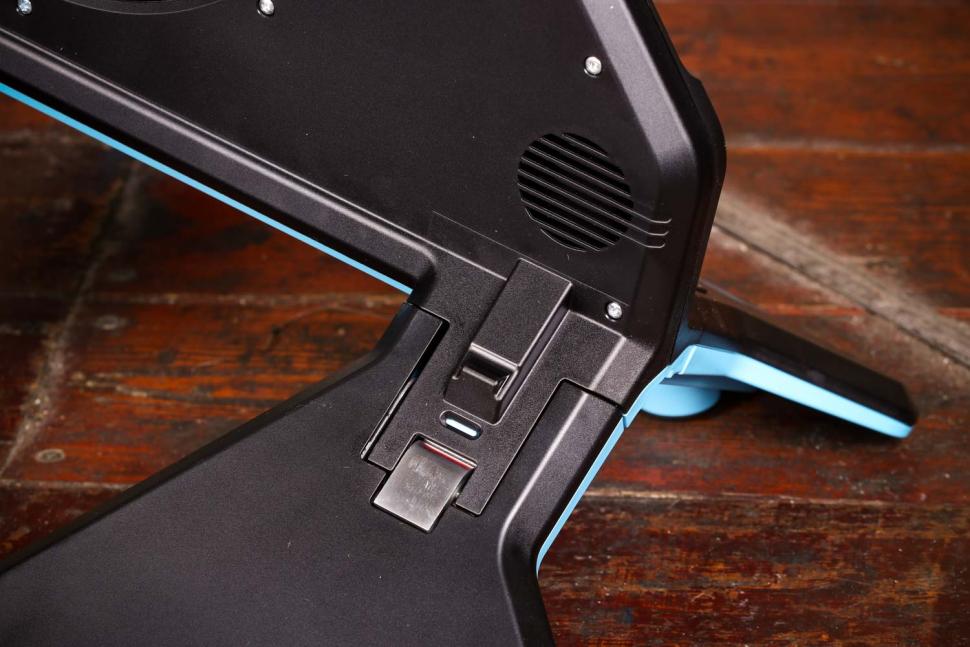


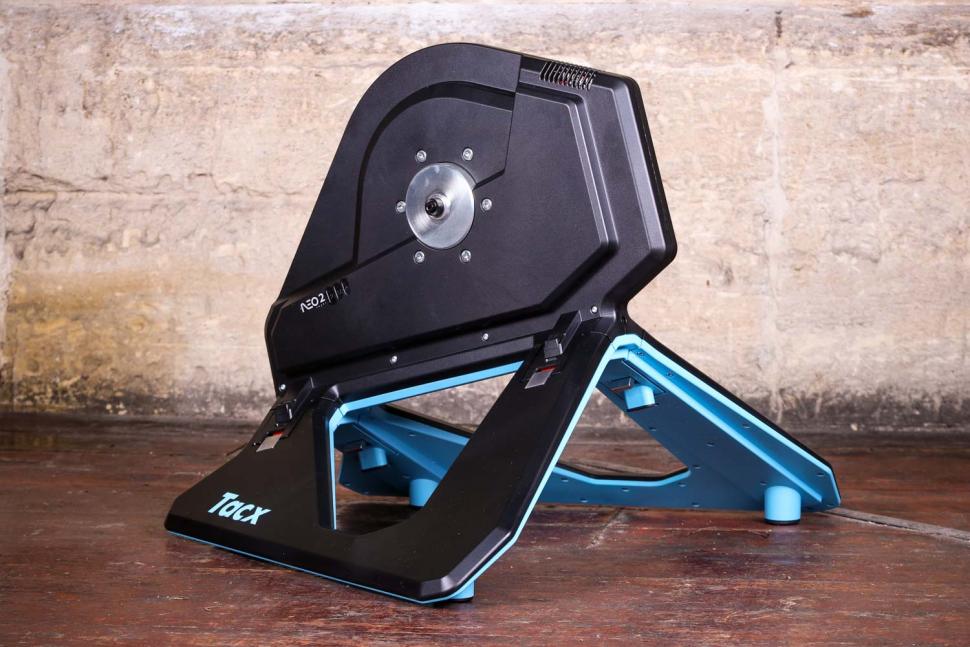

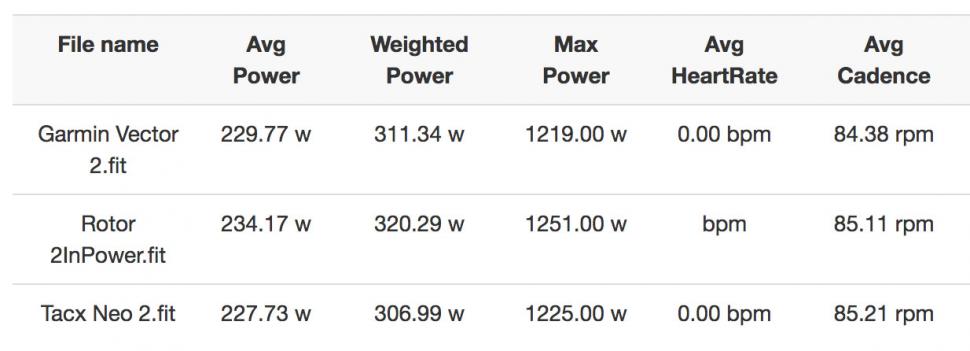

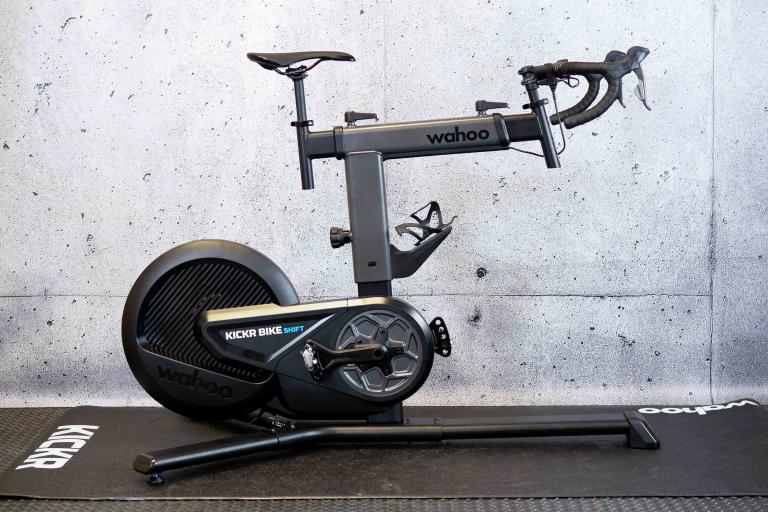
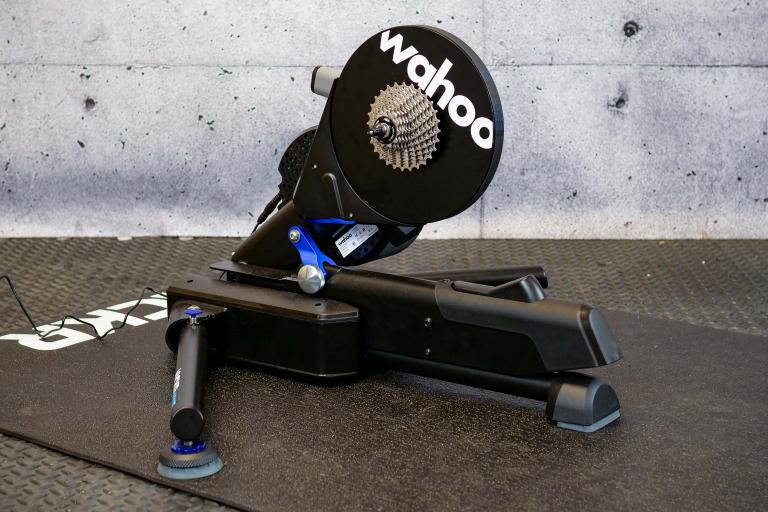
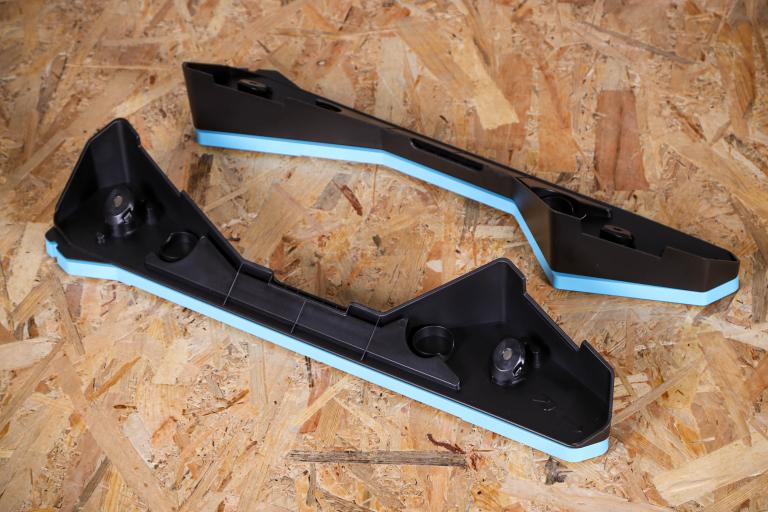

Add new comment
6 comments
CX don’t be so sure, even with Garmin buying Tacx there were comments last year which DC Rainmaker highlighted when reviewing the Neo 2 that it was a possibility, might not work for the original Neo but going forward you might even get Garmin/Tacx making their own climb.
Just waiting for Tacx and Wahoo to release metal bits and firmware to link my 'climb', which sits sighing for movement. I replaced my Kickr 18 with the Neo 2 after two failures.
Chances of coupling Tacx and Wahoo virtually non, with Garmin buying Tacx recently.
One major improvemement from reading forums is that the Neo 2 works with medium/long cage derailleurs, which was not the case with Neo 1.
I have and still use an original NEO 1. The original did not ship with 2 extra washers, all NEO's have them now.
All NEO's have always worked with short, medium and long cage rear derailleurs, including SRAM eagle and AXS (you will need an XD-r or XD freehub body from tacx though).
The NEO 1 had issues with TT frames, so the NEO 1.1 (not the official name) was released that solved most of the frame issues. NEO 2 is exactly the same chassis as the NEO 1.1. There are still issues with some disc brake set ups, so you may need to lossen or remove the brake caliper.
NEO 2 ships with a full set of thru-axle adapters including those for RWS axles. Some frames require that you contact tacx directly for a longer or large adapter such as specialized SL6's ebcuase they have a slightly larger hole in teh frame than 99% of other frames and some have thicker dropouts again this requires a message to tacx and they will send you the adpater FOC.
I've been using the first Neo for a year and a half now. The only negatives I can report are:
1) When I've put disc braked bikes on, I've ended up having to remove the rear calliper as it fouled turbo's cover if I didn't. I would imagine with the Neo 2 that's been fixed?
2) Sourcing a through axle adapter online was a PITA.
I like it a lot. It has been utterly reliable * and currently, I would be happy to buy another one (or its successor) if I lost it.
* On the advice of electronics engineering friends of mine, I recommend, and always use, surge protection plugs for all electronics connected to mains power.
I've been using the first Neo for a year and a half now. The only negatives I can report are:
1) When I've put disc braked bikes on, I've ended up having to remove the rear calliper as it fouled turbo's cover if I didn't. I would imagine with the Neo 2 that's been fixed?
2) Sourcing a through axle adapter online was a PITA.
I like it a lot. It has been utterly reliable * and currently, I would be happy to buy another one (or its successor) if I lost it.
* On the advice of electronics engineering friends of mine, I recommend, and always use, surge protection plugs for all electronics connected to mains power.